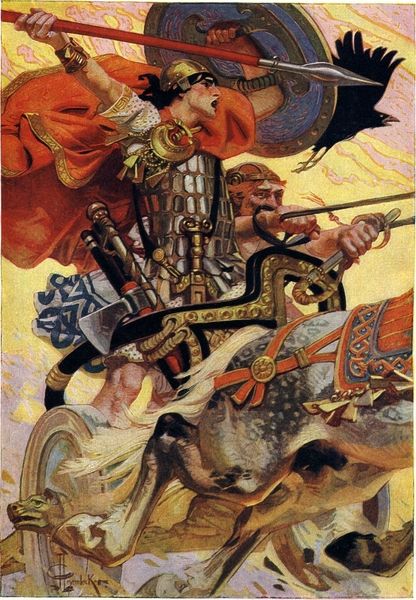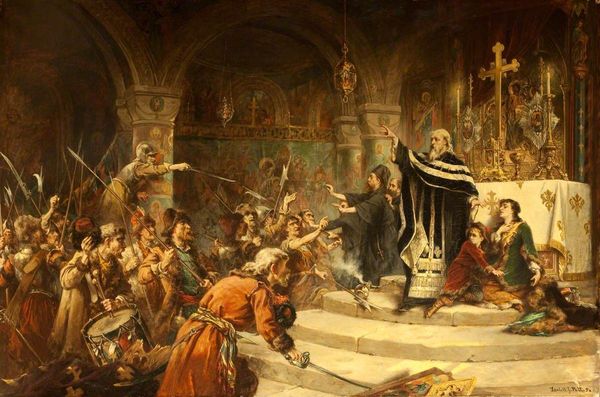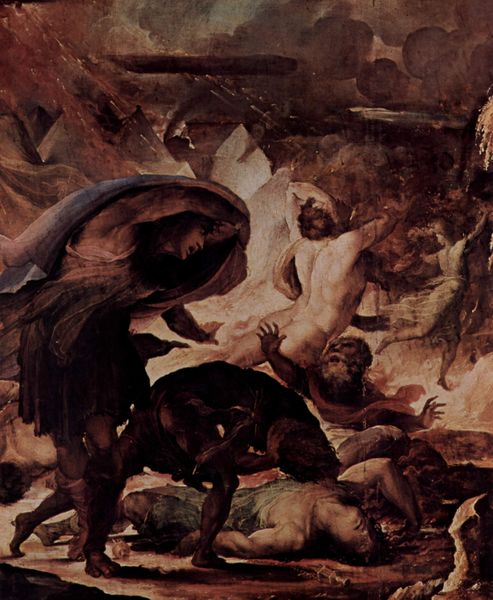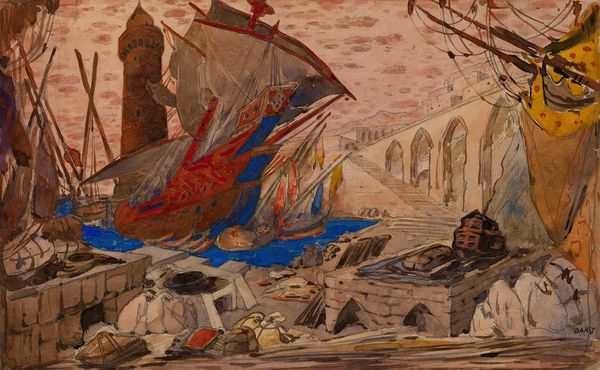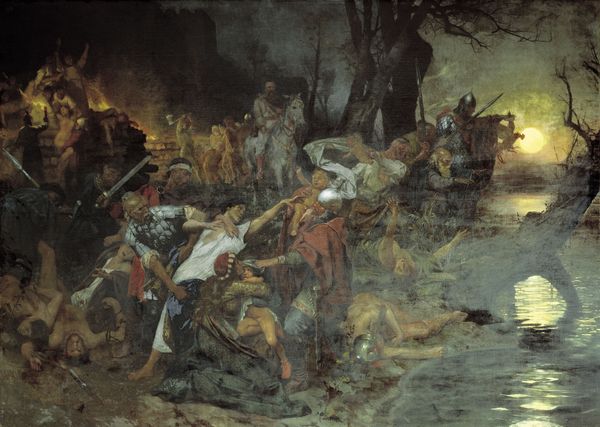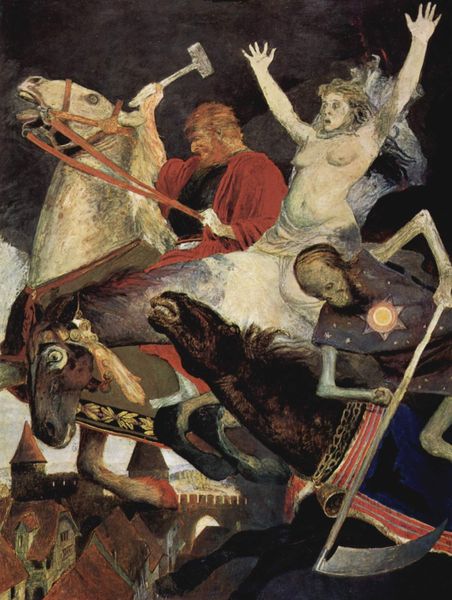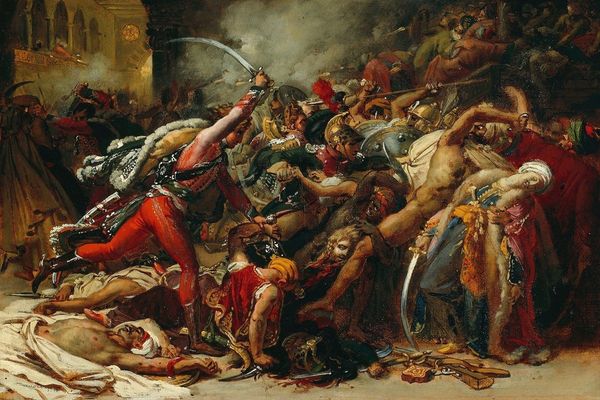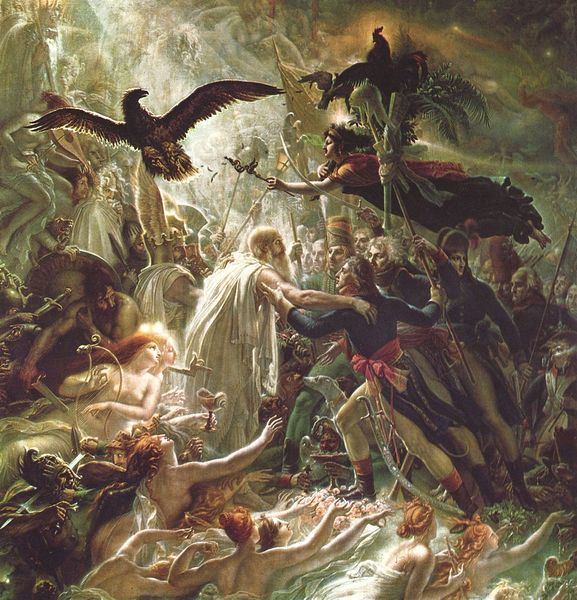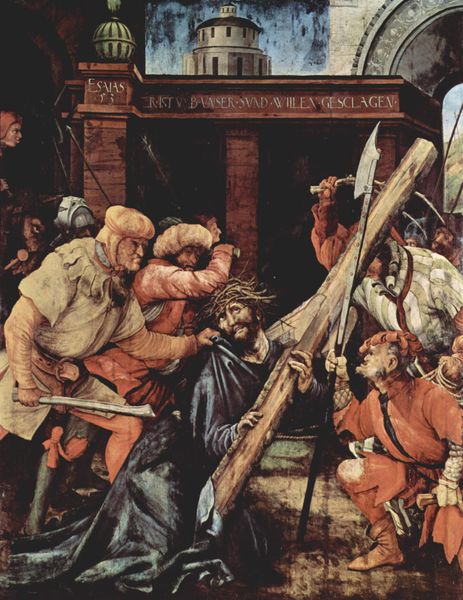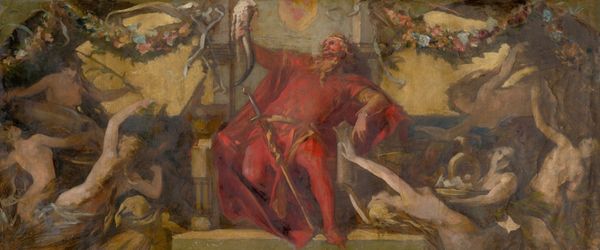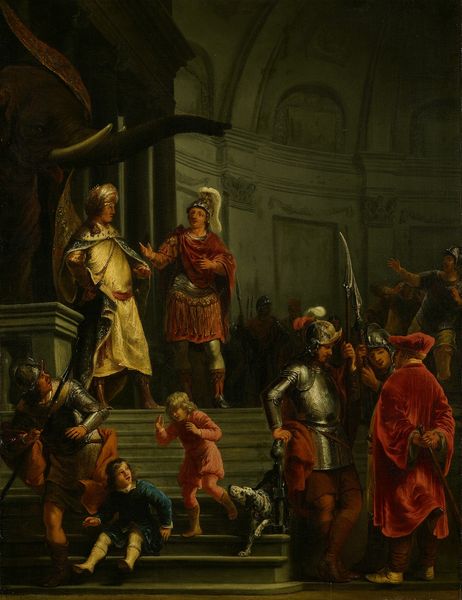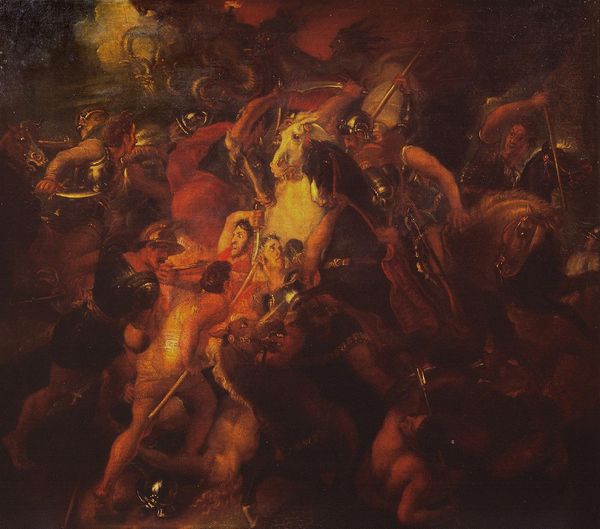
painting, oil-paint
#
fantasy concept art
#
narrative-art
#
fantasy art
#
painting
#
fantasy illustration
#
oil-paint
#
landscape
#
fantasy-art
#
figuration
#
symbolism
#
history-painting
Copyright: Public Domain: Artvee
Curator: What an intense piece! At first glance, it feels chaotic, like a Shakespearean tragedy unfolding in fast motion. The muted colors and the flurry of activity really give it this overwhelming, dramatic atmosphere. Editor: Indeed. This oil painting, titled "Eviradnus," created around 1903 by Eugène Grasset, offers a tableau of clashing figures set against a gothic hall, where historical and narrative art intersect. The eye travels restlessly, following a zig-zagging composition from the fallen figure to the airborne jester, tracing lines of tension and violence. Curator: Right? And that jester seems almost… triumphant? Or maybe just deliriously unhinged. It makes me wonder, is this a moment of rebellion? A dark fairytale gone awry? The way Grasset depicts movement and emotion, especially in the faces, is so captivating. Editor: Precisely. Grasset employs Symbolist undertones, evidenced in his use of dramatic figuration set within carefully considered architectonic and chromatic structures. Observe how each figure’s placement—a fallen queen, enraged combatants, a flailing fool— contributes to the underlying emotional geometry of loss, rage, and, as you said, a disturbing sense of dark celebration. Curator: And the architectural setting isn't just a backdrop; it’s practically a character itself! Those gothic arches and shadowed corners seem to echo the turmoil of the scene. I feel like I could get lost in those details for hours. Editor: Yes, that elaborate space is doing serious semiotic work; it seems designed to amplify both the immediacy and remoteness of the historical scene that Grasset wants us to ponder. But is it about power, or just loss of it? A warning? A celebration? Curator: Hmmm, I lean more towards a sense of doom. A feeling that any kind of system or societal structures are collapsing and falling. Like those dramatic colours. It’s quite immersive… almost uncomfortably so. Editor: Agreed. A work like this lingers precisely because Grasset offers no clear answers; only visceral feeling rendered in dense strokes of pigment that hint at history repeating with unrelenting savagery. So is our job as audiences to find and provide an answer of question this work poses. Curator: Well, it definitely feels like it. So it feels more necessary than a visual joy, doesn't it? Editor: Absolutely. The drama in the artwork makes the art piece to stand out by having different aspects such as; themes, figuration and most especially by style of symbolism and we can't definitely forget the medium with the usage of oil paint and other tools that gives vibrant colours to the viewers.
Comments
No comments
Be the first to comment and join the conversation on the ultimate creative platform.
